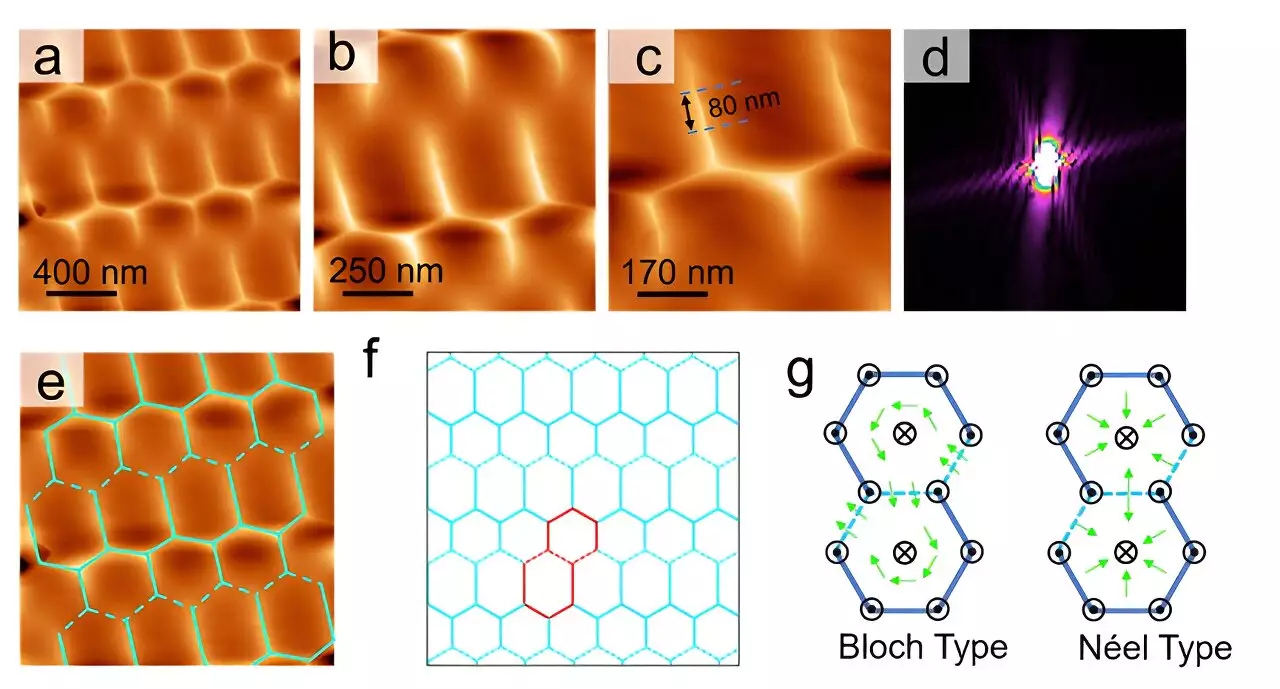Recent advancements in the field of condensed matter physics have illuminated the intriguing behaviors exhibited by kagome lattices. A collaborative research endeavor from China has shed light on the intrinsic magnetic structures within these lattices, achieving this milestone through the use of cutting-edge techniques such as magnetic force microscopy (MFM), electron paramagnetic resonance spectroscopy, and micromagnetic simulations. The outcomes of this groundbreaking research were made public in the esteemed journal Advanced Science on August 19, signaling a significant leap forward in our understanding of the role of lattice structures in magnetic phenomena.
The Importance of Lattice Structures in Material Science
Understanding the interaction between a material’s internal electron dynamics and its lattice framework is essential for predicting the physical properties of various materials. Kagome lattices, with their unique geometry characterized by a repeated pattern of connected triangles, are particularly fascinating. This structure fosters remarkable phenomena, including topological magnetism and unconventional superconductivity, making them a focal point for researchers striving to unveil the secrets of high-temperature superconductivity. Despite the extensive research, the intrinsic spin configuration of these lattices has largely remained enigmatic—a gap that this recent study aims to bridge.
The research team, under the leadership of Prof. Lu Qingyou from the Hefei Institutes of Physical Science, uncovered a novel lattice-modulated magnetic array within the binary kagome Fe3Sn2 single crystal. Through a careful analysis, they identified a distinctive broken hexagonal configuration resulting from the interplay between hexagonal lattice symmetry and uniaxial magnetic anisotropy. Their findings were further corroborated by Hall transport measurements, which indicated the existence of topologically broken spin configurations—a significant revelation in the understanding of kagome lattices and their magnetic properties.
Variable-temperature experiments offered additional insights, revealing that the magnetic reconstruction within Fe3Sn2 single crystal structures occurred via a second-order or weak first-order phase transition. This challenges previous assumptions that had advocated for a first-order transition, showcasing the evolution of our scientific understanding. Furthermore, the research redefined the low-temperature magnetic ground state, identifying it as an in-plane ferromagnetic state—a conclusion that contrasts contrasting earlier interpretations suggesting a spin-glass state.
A New Perspective on Magnetic Phase Diagrams
In light of their significant discoveries, the research team established a new magnetic phase diagram for Fe3Sn2, providing a more comprehensive framework for understanding its magnetic properties. The quantitative data obtained from MFM studies revealed persisting out-of-plane magnetic components even at low temperatures, illuminating new aspects of the kagome lattice behavior.
Implications for Future Quantum Technologies
With the help of the Kane-Mele model, the researchers were able to elucidate the opening of the Dirac gap at lower temperatures, which refuted earlier theories regarding the formation of skyrmions under these conditions. This breakthrough holds remarkable implications, offering a new perspective that could pave the way for advancing quantum computing technologies and improving our grasp of high-temperature superconductivity. The strides made in this investigation not only deepen our understanding of magnetic phenomena in kagome lattices but also open new pathways for innovative technological applications in the future.


Leave a Reply